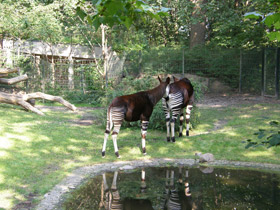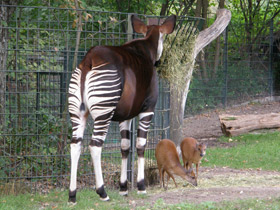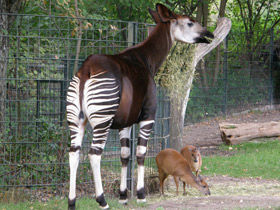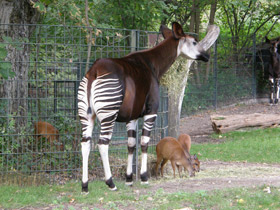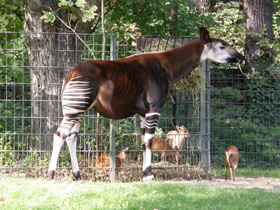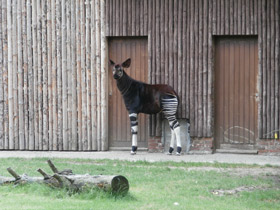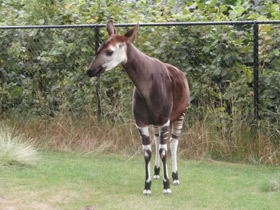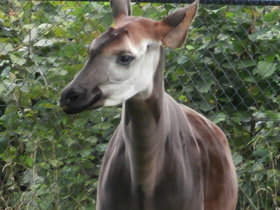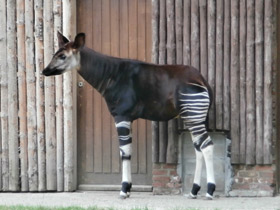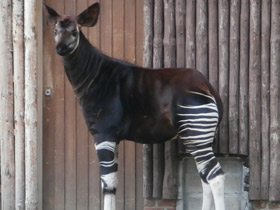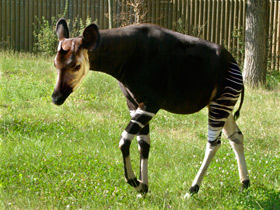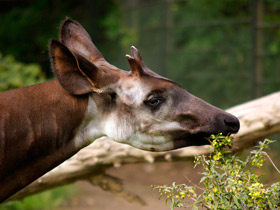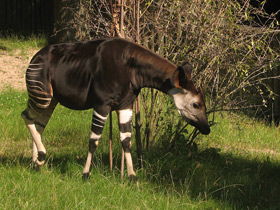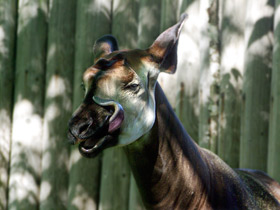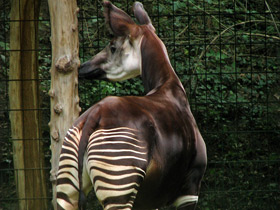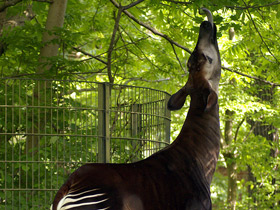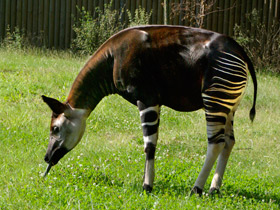Okapi Okapia johnstoni
Until the beginning of the last century, the okapi itself was not known to western scientists but native people of the region were known to observe and hunt these animals that inhabited the basin of Congo River. The natives called this animal the “okapi” and described it appearance in detail. The Europeans in Africa were reluctant to accept the idea of the existence of a large, horse-like mammal in African forests until two skins of this mysterious animal were presented to one of the scientists. Royal Zoological Society of London classified this animal as a new species and recognized it under the name of “Johnston horse”. As more information became available biologists discovered that the new species was not a horse but a relative of the giraffe. That is how a new genus appeared in taxonomy, which was given the name used by the natives, “okapi”. It was only in 1909, when the Europeans could see a live okapi.
Native to the Democratic Republic of Congo, okapis are mainly found in very dense tropical rainforests. They are not very similar to the giraffes: their height varies from “only” 1.5 to 1.72 meters, length reaches 2 meters, and weight is about 250 kilograms. The okapi body is covered in short velvety dark reddish brown fur, its hind limbs and upper forelegs have striking black-and-white cross-stripes, and the head features narrow snout, big ears and large black eyes. Male okapis have horns covered with skin and hair; females lack horns. The neck of the okapi is not as long as the neck of the giraffe, but its dark-bluish tongue is very long too and it is so flexible that the animals are capable of using it for washing their eyes.
The range of the okapi is limited by relatively small area around the basin of Congo River, occupied by the dense virgin rainforests. But even in the rainforests, okapis are only found in the brighter places located close to the rivers and clearings, where tree branches are hanging down. Okapis can not live in the gallery forests – they will not find any food there! Okapis feed primarily on the leaves, buds, and shoots, catching a young bush branch with their long tongue and tearing the leaves with a swift, sliding movements of the tongue. They can also eat some grasses, fruits, ferns, and mushrooms. Okapis are diurnal and forage during the day. Okapis are solitary animals with the exception of the time when the female joins the male for a few days, sometimes in the company of her calf born last year. After a gestation period that lasts about 450 days (15 months), the female Okapi retreats into the dense undergrowth where she gives birth to a single calf. The newborn remains in the nest hiding in the dense vegetation and producing sounds only when calling back to its mother. Since okapis do not have vocal cords, they communicate producing quiet mooing, coughing, and whistling sounds.

















